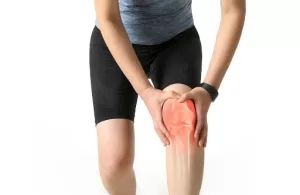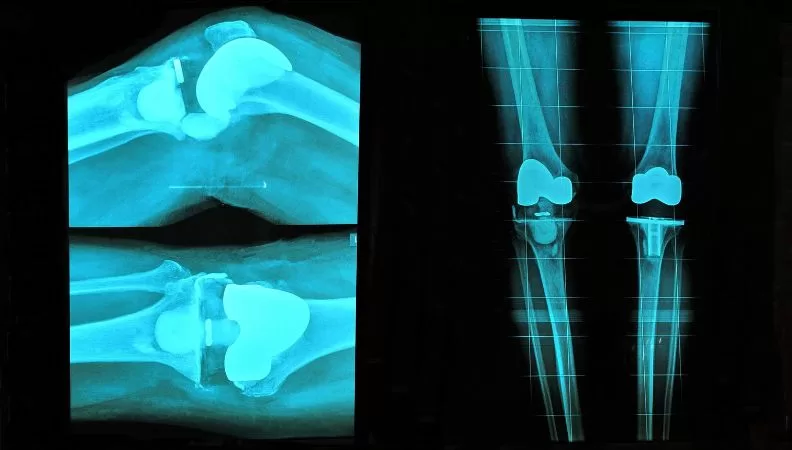What to Expect: Immediate Post-Op Pain
Pain, swelling, and bruising are normal after total knee replacement (TKR) surgery. Post-operative pain is often significant, and effective pain management is crucial for a smooth recovery. As anesthesia wears off, discomfort around the surgical site is common. Your healthcare team will provide pain medication, either orally or intravenously, to manage this. Pain is subjective and varies depending on factors like surgery depth, pain threshold, and overall health. Open communication with your healthcare team ensures proper pain control and comfort.
In the initial days, pain management and early physical therapy will begin. The medical staff will monitor pain levels and guide you through gentle exercises to improve circulation and prevent stiffness. Additional methods like nerve blocks and ice packs may also be used for pain relief and reducing swelling. Active participation in your pain management plan ensures a smoother recovery.

Pain Management Medications Following Knee Replacement Surgery
Doctors administer various medications before, during, and after knee replacement surgery, including painkillers, antibiotics, and blood thinners. Pain medications, such as opioids, are used immediately post-surgery for relief but have side effects like nausea and dependency, so they’re prescribed for a short time. NSAIDs like ibuprofen reduce inflammation but can cause stomach issues and increased bleeding. Stronger medications like tramadol or oxycodone are used for severe pain but come with risks like drowsiness and respiratory depression.
Pain management will depend on pain severity, medical history, and other medications. Discuss your pain management plan with your doctor, understand potential side effects, and report any unusual symptoms. By working closely with your doctor and following instructions, you can effectively manage post-operative pain, leading to a smoother recovery.
Pain After Knee Replacement: Exercise and Therapy
Physical therapy plays a crucial role in rehabilitation after knee replacement surgery, starting immediately after the procedure. Initially, therapists assist with simple movements like ankle pumps and leg raises to improve circulation and prevent blood clots. As recovery progresses, exercises like walking with assistive devices and knee bends help regain strength, flexibility, and range of motion.
Strengthening knee muscles is vital for stability, pain reduction, and joint protection. Exercises such as squats, lunges, and leg presses target the quadriceps, hamstrings, and calves while stretching improves flexibility and circulation, easing pain. Consistency in therapy sessions and home exercises is key for successful recovery, but it’s important not to overexert yourself early on. Working closely with your physical therapist ensures effective pain management and long-term recovery.
Pain After Knee Replacement: Alternative Therapies
In addition to pharmacological and physiotherapeutic treatments, alternative therapies can also help reduce discomfort and aid healing after knee replacement surgery. Methods like adductor canal blocks and ultrasound therapy are particularly effective in managing pain and improving recovery.
An adductor canal block is a regional anesthesia technique where a local anesthetic is injected near the thigh’s adductor canal. This block numbs the nerves supplying the knee, providing significant pain relief, especially useful in the immediate post-op period, making physical therapy more manageable.
Ultrasound therapy uses sound waves to stimulate tissue healing and reduce inflammation, helping alleviate pain and enhance knee function. Massage therapy is another option, which relieves muscle tension, improves circulation, and reduces pain. Additionally, therapies like acupuncture and yoga may offer benefits for pain management, though more research is needed to determine their effectiveness.
Before trying alternative therapies, it’s essential to consult with your doctor to ensure they are safe and suitable for your recovery. Choose an experienced practitioner familiar with knee replacement recovery. When used alongside traditional pain management strategies, alternative therapies can significantly improve your recovery experience. Always collaborate with your healthcare team to explore the best approach for your needs.
Pain After Knee Replacement: Managing Complications
Although most people recover well after knee replacement surgery, complications can occur. Persistent pain, swelling, or bruising may indicate issues like infection, nerve damage, or implant problems. Symptoms of infection include fever, chills, and redness, while blood clots can cause pain and swelling in the legs. Loosening implants may lead to instability and pain, and stiffness can limit movement.
Prompt medical attention is essential for complications. Early diagnosis and treatments like antibiotics, blood thinners, or physical therapy can prevent further issues, and surgery may be needed in some cases.
Pain After Knee Replacement: Psychological Aspects of Management
Chronic pain can affect mental health, causing anxiety, depression, and frustration. Psychological support is crucial in pain management to help patients improve their quality of life. Cognitive-behavioral therapy, mindfulness techniques, and support groups can help manage emotional stress and offer coping strategies. Working with a healthcare team that includes mental health professionals ensures holistic recovery and optimal well-being.
Pain After Total Knee Replacement: The Role of Diet and Nutrition
Diet and nutrition play a crucial role in recovery after knee replacement surgery, helping reduce inflammation, promote tissue repair, and improve overall well-being. A balanced diet rich in anti-inflammatory nutrients like omega-3 fatty acids (found in fatty fish, flaxseeds, and walnuts) can reduce pain and swelling. Antioxidants in fruits, vegetables, and whole grains protect cells and promote healing, while adequate protein intake supports tissue repair and muscle building.
Avoiding processed foods, sweets, unhealthy fats, alcohol, and caffeine is important as they can worsen inflammation. Staying hydrated by drinking plenty of water also supports optimal recovery. A healthy diet can help minimize pain, enhance healing, and improve your overall recovery after knee replacement surgery.
Assistive Devices and Pain Management
After knee replacement surgery, assistive devices like walkers, crutches, and canes play a vital role in pain management, improving mobility, and promoting a safe recovery. These devices help reduce weight-bearing stress on the new knee, offering comfort and stability. Initially, you’ll likely use a walker or crutches, then graduate to a cane as recovery progresses. Other helpful devices include raised toilet seats, grab bars, and compression stockings, which reduce swelling and improve circulation.
It’s essential to follow your physical therapist’s instructions on using these devices correctly to prevent injury. Maintaining proper posture and not over-exerting yourself is key. Working closely with your healthcare team ensures you use the right devices effectively for a smooth recovery.
Conclusion
Pain after total knee replacement is a common concern for many patients, but it can be effectively managed with the right strategies. Understanding the sources of pain after total knee replacement, such as post-surgical inflammation and the body’s healing process, is crucial for better managing recovery. Pain after total knee replacement can be reduced with medication, physical therapy, and lifestyle modifications, ensuring a smoother rehabilitation journey.
As time goes on, pain after total knee replacement should gradually decrease as the knee joint heals and strengthens. Regular movement, exercises, and proper rest can help reduce discomfort and improve mobility. If pain after total knee replacement persists or worsens, it’s important to seek medical advice to rule out complications.



